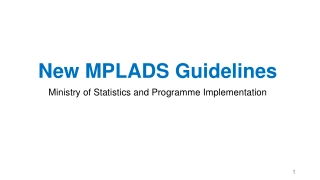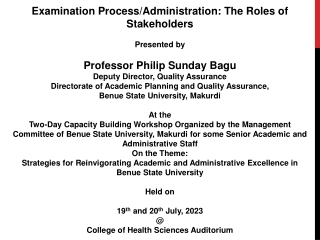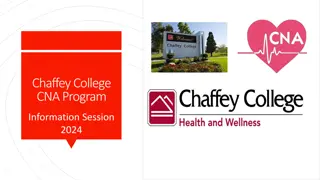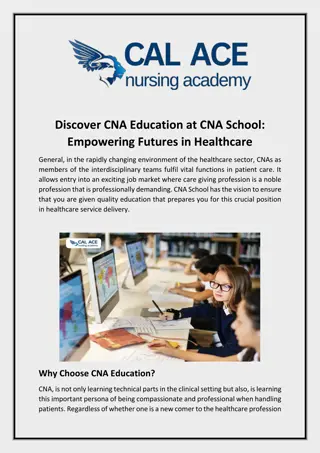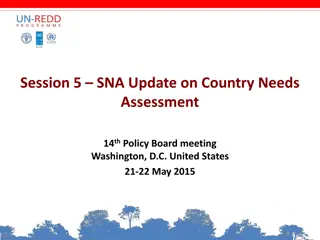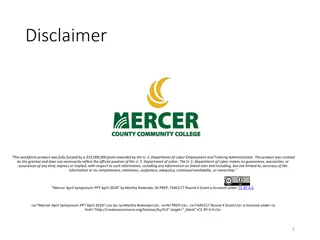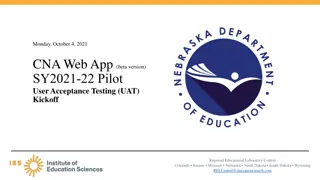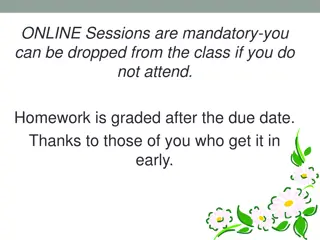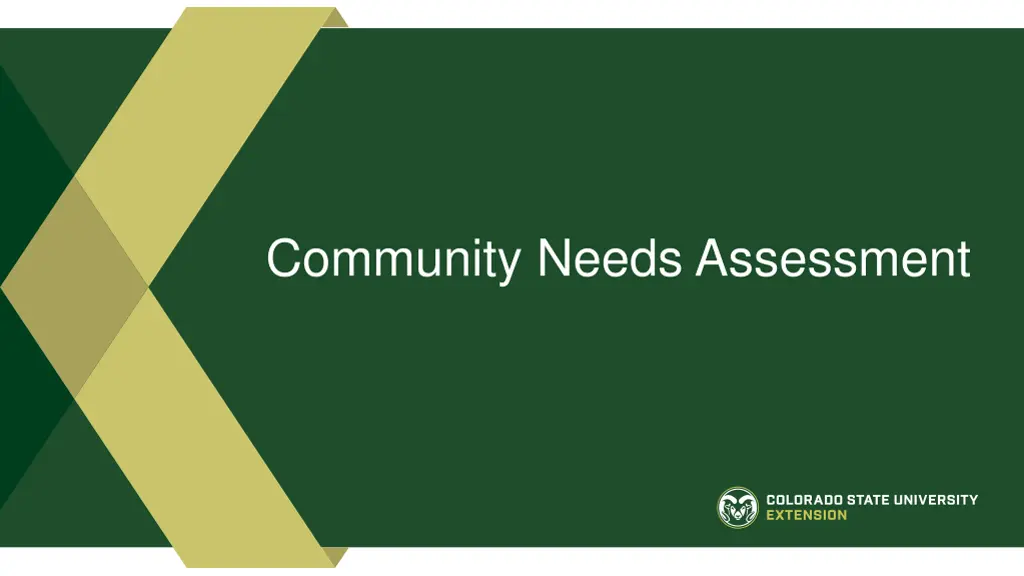
Community Needs Assessment: Empowering Coloradans for Impactful Change
Conducting a Community Needs Assessment (CNA) is essential for identifying hidden community priorities, developing a deeper understanding of issues, and creating impactful programs in line with the mission of empowering Coloradans. The process involves mixed-method approaches, stakeholder engagement, and systematic planning to drive positive outcomes. Explore the top 10 reasons to conduct a CNA and understand the pilot and statewide timelines for the assessment. Co-creating program plans with partners, documenting needs, and analyzing data all play a crucial role in addressing important community issues effectively.
Download Presentation

Please find below an Image/Link to download the presentation.
The content on the website is provided AS IS for your information and personal use only. It may not be sold, licensed, or shared on other websites without obtaining consent from the author. If you encounter any issues during the download, it is possible that the publisher has removed the file from their server.
You are allowed to download the files provided on this website for personal or commercial use, subject to the condition that they are used lawfully. All files are the property of their respective owners.
The content on the website is provided AS IS for your information and personal use only. It may not be sold, licensed, or shared on other websites without obtaining consent from the author.
E N D
Presentation Transcript
CNA Background New CSU President and new VP for Engagement & Extension Piloted in Larimer County: fall 2018 - spring 2020 Supplement voices of existing stakeholders with broader range of voices More systematic and intentional Bigger picture look at opportunities rather than program-specific In line with mission to empower Coloradans to address important & emerging community issues using dynamic, science-based educational resources
Top 10 reasons to do a CNA 1. Increased awareness of CSUE/OEE 2. Start new relationships 3. Identify hidden community priorities 4. Develop a fuller understanding of community issues 5. Add value to county government by sharing data 6. Working smarter to serve a broader range of people efficiently 7. Co-creation of programs with partners 8. Documented needs could lead to new CSUE resources, external funding opportunities 9. Develop shared understanding and strategy among county Extension office staff 10. Establish clearer paths to impact
Mixed method process Key County program plans OEE Secondary data analysis informant interviews/ focus groups CNA survey perceptions survey
Pilot and Statewide timelines Sept./Oct. 2020 Oct. Dec. 2020 Jan. Mar. 2021 Mar. May 2021 Summer 2020 CNA survey Interviews /focus groups Secondary data Program plans Perceptions survey Nov. 2020 Feb. 2021 Mar. May 2021 May Aug. 2021 Aug. Oct. 2021 Summer 2020
Co-create program plans with partners Draft county program plan Final county program plan Additional partner input Process all data
Sample county program plan content Barriers to accessing CSUE resources CSUE intended impact Empower women to share in ag business decision- making Key Contributing factors Supporting data (social indicators) Strategies for CSUE Partner organizations issue/need Prevalence of county mental health issues 2x state average County public health, Farm Bureau, Corn Growers Mental health for farmers Economic uncertainty, stress None Annie's Project Provide meaningful growth opportunities for Latinx children in need of care 3x as many Latinx families in the county have two working parents compared to non- Latinx families 4-H programs for Latinx youth & referrals to social services Both parents often employed full-time to earn living wage Childcare for Latinx families Lack of awareness, translation La Familia
County 1 Program Plan County 2 Program Plan County 3 Program Plan Regional and statewide OEE priorities & resources
Partnering with other counties Area counties work as an area Others can partner or not Considerations: Adjacent county(ies) Overlap of perceived issues, potential partners/informants Benefit from coordination/efficiency/single point-of-contact
Opportunities for BOCC, advisory board input 1. What are some key pieces of existing data (reports, etc.) that can inform Extension priorities? 2. Who are some key informants we could consider interviewing to understand certain issues in-depth? 3. What are some issues you d want us to ask about on a survey (i.e. youth mental health, food safety, emergency preparedness)? Can also revisit these questions as we start each step of the CNA process Opportunity to see results and review/contribute to drafting of County Program Plan (end of process)

